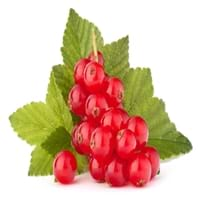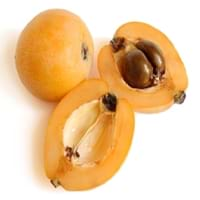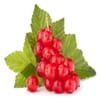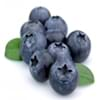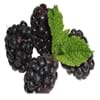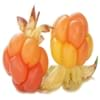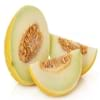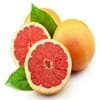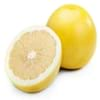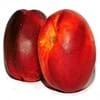Health Benefits
Cancer prevention, Gout treatment, Heart care, Regulation of heart rate, Treatment of rheumatism
Cancer prevention, Heart care, Reduces nervous tension, Reduces blood circulation problems, Reduces stress, Regulation of heart rate, Strengthening of bones
General Benefits
Anti oxidant properties, Controls blood pressure, Cures fever, Digestive aid, Healing of wounds, Helps in weight loss, Strengthens bones
Anti-inflammatory properties, Controls blood pressure, Digestive aid, Eye care, Helps in weight loss, Improves eye vision, Maintains healthy cholesterol level, Strengthens bones
Skin Benefits
Brightens and lightens complexion, Reduces wrinkles, Treatment of acne
Anti-aging benefits, Reduces wrinkles, Treatment of dark spots, Treatment of skin diseases
Hair Benefits
Protects hair
Protects hair
Allergy Symptoms
Abnormally rapid heart rate, Anaphylaxis, Breathing difficulty, Hives, Itching, Swallowing difficulties
Diarrhea, Itching of mouth, Nasal congestion, Sneezing, Swelling of face, Watery eyes
Side Effects
Possibly unsafe during pregnancy
Allergic reaction
Best Time to Eat
Best if taken as a breakfast (or empty stomach), As a snack in the late afternoon, Don't eat after meal, Morning time (before lunch)
Along with meal, As a snack in the late afternoon, Don't consume at night and before bed, Morning time (before lunch)
Vitamin B5 (Pantothenic Acid)
Not Available
Vitamin C (Ascorbic Acid)
Not Available
Vitamin E (Tocopherole)
Not Available
Vitamin K (Phyllochinone)
Not Available
Lutein+Zeaxanthin
Not Available
Phytosterol
Not Available
Calories in Fresh Fruit with Peel
Calories in Fresh Fruit without Peel
Not Available
Not Available
Calories in Frozen Form
Not Available
Not Available
Calories in Dried Form
Not Available
Calories in Canned Form
Not Available
Calories in Juice
Not Available
Calories in Jam
Not Available
Calories in Pie
Not Available
Type
Berry
Tree fruit, Tropical
Varieties
Rovada, Stanza, Red Lake, Junifer and Jonkheer van Tets
Ahdar, Ahmar, Asfar, Blush, Champagne, Early Red, Eulalia, Fire Ball, Golden Red, Golden Yellow, Oliver, Thales, Thames Pride, Victor and Wolfe
Taste
Sour, Tart
Sweet, Tart
Soil Type
Moist, Well-drained
Clay, Loam, Sand, Well-drained
Climatic Conditions
Cold
Warm to hot climate
Facts about
- The albino version of red currants known as white currants, are often sold as different fruit.
- Red currant tea is healthy substitute for coffee.
- There are more than 150 varieties of red currants.
- Loquats are used in plum wine manufacturing.
- Dried leaves of loquat are used to make herbal tea.
- The seeds of loquat are slightly toxic & the symptoms of intoxication are nausea, vomiting & shortness of breath.
Top Producer
Russia
Japan
Other Countries
Belgium, France, Germany, Ireland, Italy, Netherlands, Poland, Portugal, Scotland, Spain, Sweden, United Kingdom
Brazil, Chile, China, Egypt, Israel, Italy, Morocco, Pakistan, Portugal, Spain, Turkey
Top Importer
Germany
China
Top Exporter
Russia
Spain
Botanical Name
Ribes rubrum
Eriobotrya japonica
Synonym
Not Available
Crataegus bibas or Mespilus japonica or Photinia japonica
Subkingdom
Tracheobionta
Tracheobionta
Division
Magnoliophyta
Magnoliophyta
Class
Magnoliopsida
Magnoliopsida
Order
Saxifragales
Rosales
Family
Grossulariaceae
Rosaceae
Species
R. rubrum
E. japonica
Generic Group
Saxifrage
Rose
Difference Between Red Currant and Loquat
We might think that Red Currant and Loquat are similar with respect to nutritional value and health benefits. But the nutrient content of both fruits is different. Red Currant and Loquat Facts such as their taste, shape, color, and size are also distinct. The difference between Red Currant and Loquat is explained here.
The amount of calories in 100 gm of fresh Red Currant and Loquat with peel is 56.00 kcal and 47.00 kcal and the amount of calories without peel is Not Available and Not Available respectively. Thus, Red Currant and Loquat belong to Low Calorie Fruits and Low Calorie Fruits category.These fruits might or might not differ with respect to their scientific classification. The order of Red Currant and Loquat is Saxifragales and Rosales respectively. Red Currant belongs to Grossulariaceae family and Loquat belongs to Rosaceae family. Red Currant belongs to Ribes genus of R. rubrum species and Loquat belongs to Eriobotrya genus of E. japonica species. Beings plants, both fruits belong to Plantae Kingdom.
